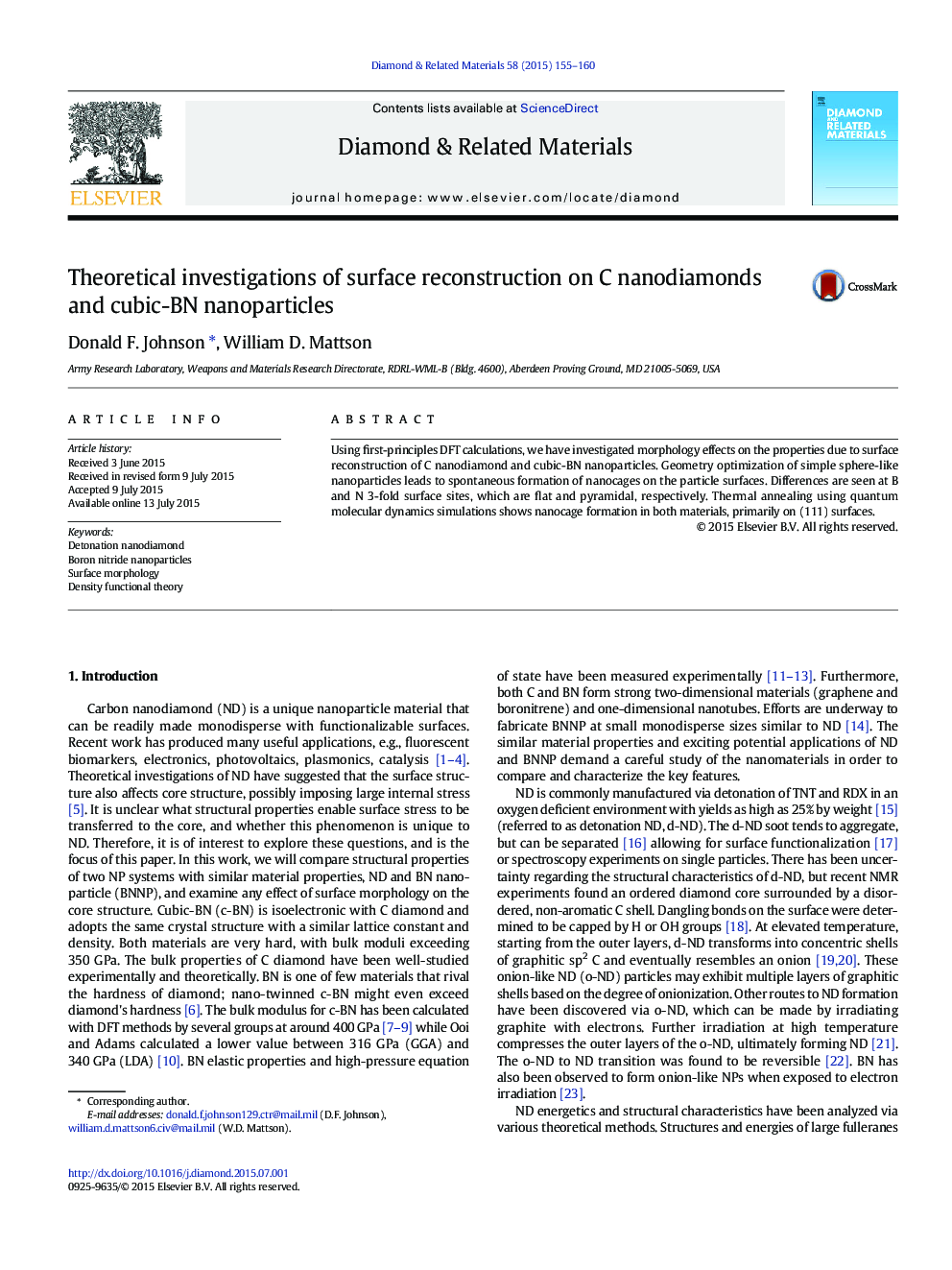| Article ID | Journal | Published Year | Pages | File Type |
|---|---|---|---|---|
| 702050 | Diamond and Related Materials | 2015 | 6 Pages |
•Nanodiamonds and cubic-BN nanoparticles were modeled using density functional theory.•Geometry optimization led to nanocage formation and flat graphitic sections.•Nanocages formed primarily on (111) surfaces of both C and BN particles.•Further cage formation and growth occurred during molecular dynamics simulations.
Using first-principles DFT calculations, we have investigated morphology effects on the properties due to surface reconstruction of C nanodiamond and cubic-BN nanoparticles. Geometry optimization of simple sphere-like nanoparticles leads to spontaneous formation of nanocages on the particle surfaces. Differences are seen at B and N 3-fold surface sites, which are flat and pyramidal, respectively. Thermal annealing using quantum molecular dynamics simulations shows nanocage formation in both materials, primarily on (111) surfaces.
Graphical abstractFigure optionsDownload full-size imageDownload as PowerPoint slide
